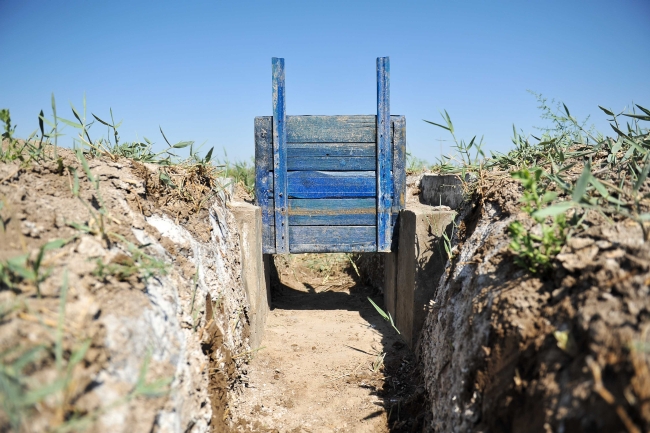Can community run reservoirs deliver?
The Green Revolution of the 1960s and 70s was underpinned by a huge expansion in public irrigation schemes. Initially, these worked well, but their performance quickly declined. Many felt the problems were institutional. Irrigation bureaucracies had not delivered efficient and equitable management. Reform was needed.

It was argued that, if the responsibility and authority for management of irrigation systems were transferred from government agencies to the farmer communities, they would be able to manage their water resources more efficiently and equitably. Starting in the Philippines, and quickly expanding to other countries with significant irrigated agriculture such as Indonesia and India, the irrigation management function was devolved wholly or partially to local farmer groups. Eventually, the approach was also promoted in sub-Saharan Africa.
The reform program was implemented under various labels, but popularly termed Participatory Irrigation Management (PIM). In many instances, the core organizational feature of PIM was the creation of local Water Users’ Associations (WUAs) that were vested with the responsibility for operation and maintenance of the infrastructure, such as canals, sluice gates, channels and small reservoirs, whereas the government retained responsibility for the head works, desilting and major repairs. The trend fitted in nicely into the prevailing development discourses: the neoliberal demand for cost recovery and improved performance, and the democratization and decentralization of decision making.
Analysis of the effects of PIM showed that the expected improvements in performance did not materialize. Communities, it seemed, had fared a little better at running irrigation schemes than government pen-pushers. What was going wrong?
A new study, just published in the journal Water International, provides some answers to this question. Researchers looked at 37 small reservoirs in Ghana and Burkina Faso. All categories of water users were interviewed to ascertain how they felt the management of the water bodies was faring after the introduction of a version of PIM which had devolved some responsibilities to local groups.
“We identified four core shortcomings of this approach to PIM,” says Jean-Philippe Venot of the Institut de recherche pour le développement (IRD), author of the study, who conducted the research whilst he was based at the International Water Management Institute (IWMI). [pullquote type=”pullquote3″ content=”“The approach remains externally triggered, fails to address rent-seeking behavior by irrigation agency personnel, adopts too narrow a focus on farmers and lacks context specificity.”” quote_icon=”yes” align=”right”]“The approach remains externally triggered, fails to address rent-seeking behavior by irrigation agency personnel, adopts too narrow a focus on farmers and lacks context specificity.”[/pullquote]
For instance, the survey found that, in Burkina Faso, there was more spontaneous pump-fuelled irrigation upstream of small reservoirs than the planned official gravity irrigation downstream of the reservoir dams. Yet, upstream irrigation remained mostly ‘un-institutionalized’.
“Spontaneous irrigators are seen as free riders, and have even been called ‘pirates’,” says Venot. “They are seen as using water they are not entitled to. Like other small-scale water users, upstream irrigators are rarely members of, nor do they feel accountable to, the WUA. Typically, they do not contribute to maintenance activities, do not attend meetings called by the WUA and do not pay water fees. Because they remain centered on downstream irrigation, WUAs appear ill-equipped to deal with the crucial issue of water allocation in multi-purpose water systems such as small reservoirs.”
Part of the problem is in the setting up of the WUAs. This is generally handled by agricultural extension agents or development project workers, who value intensive irrigation over less productive small-scale water uses.
“The WUA has become an institutional fix,” says Venot. “WUAs are considered inherently good. They are vaunted as a testimony of good performance, regardless of the processes followed for their establishment and of their outcomes.”
According to Venot, the presence of a WUA is neither a prerequisite nor a guarantee for good performance, contrary to what is often assumed for irrigation development projects.
“In the cases we studied, WUAs seemed to be restricted to routine operations,” he says. “External actors, such as the government, donors and nongovernmental organization (NGO) staff, kept the upper hand on project design. So, in effect, they decided ‘what is good for the communities’. However, they overlooked complexity and pluralism. They also got directly involved in setting up and running the WUAs, further compromising their relevance.”
Therefore, caution is needed if PIM is to be successful. Under certain circumstances, communities have often shown that they are perfectly capable of managing their own natural resources through collective action – the bedrock of PIM. However, if outsiders impose inappropriate administrative arrangements, they are courting disaster.
[hr top=”yes”/]
Venot, J-P. 2014. Rethinking commons management in Sub-Saharan West Africa: Public authority and participation in the agricultural water sector. Water International 39(4): 534-548.

